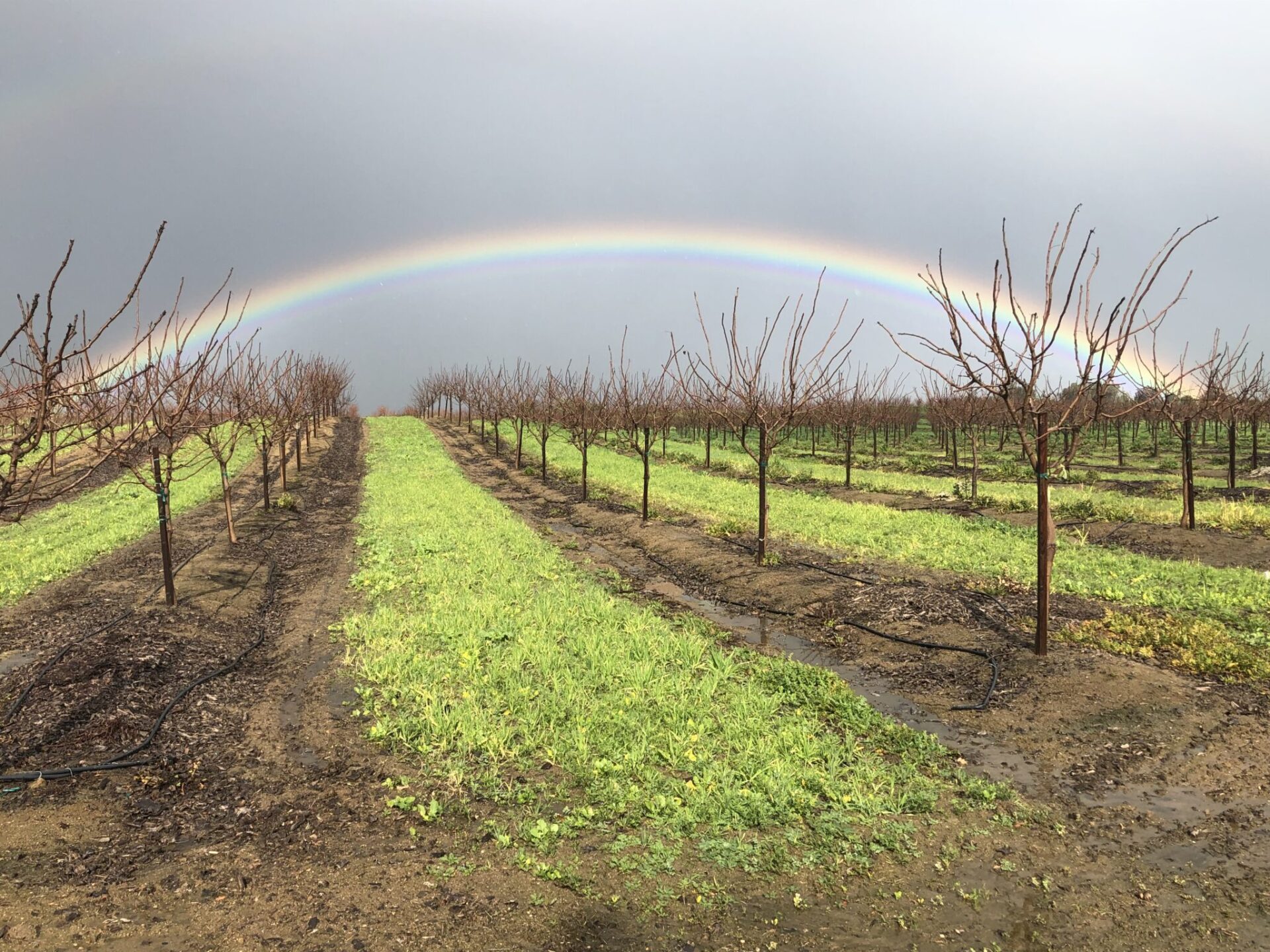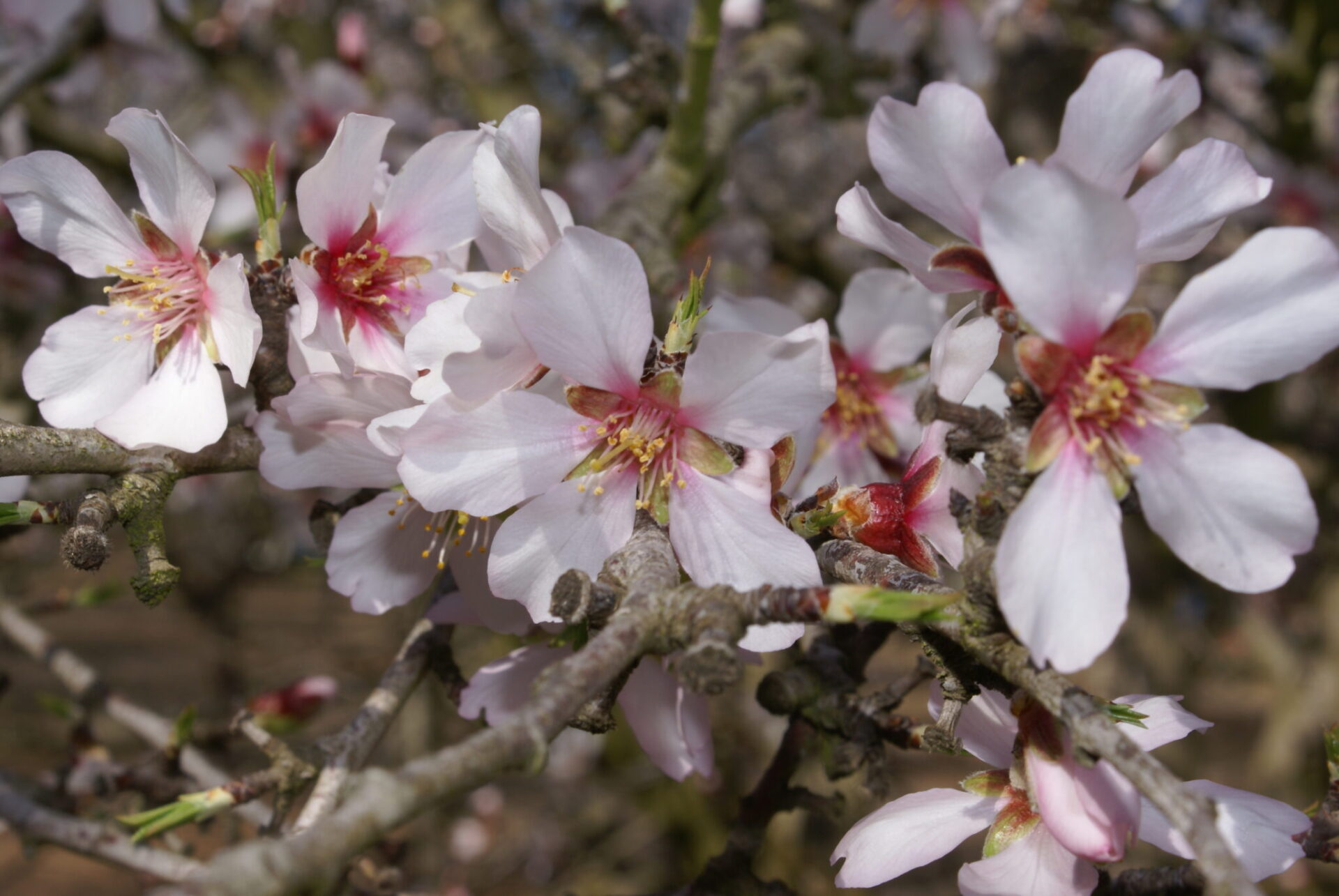
Although 2020 probably couldn’t end soon enough for most people, we are done. 2021 is easing its way in here in the west with a slow, dry arrival. The east side of the Central Valley of California from Visalia north has actually had some fog this year and accumulated decent chill.
The South Valley has had a lot of its chill negated by sunshine and a warm, dry winter through December. A recent trip to Arizona revealed a very dry southwest all the way into New Mexico and West Texas. Pecans were being picked up and pistachios were finishing up their winter haircuts, but our soils need some love. With almond bloom right around the corner, now is the time to be proactive.
In checking my moisture sensors in the pistachios, my soil saturation showed 80%. A closer look showed we were holding good moisture in the root zone, raising the average, but it was getting dry down deep. That tells me I haven’t gotten a good leaching of sodium this winter or recharged deep moisture. In speaking with many of my clients, with almond prices low in 2020, the impetus just wasn’t there to do anything extra to a lot of fields.
However, in farming, sometimes we need to be reminded we are always growing two crops; the current one, and next years. In the spring, the majority of the effort goes into the current crop. Setting up our trees in an optimal fashion is critical to optimizing yields.
Imagine you wake up early after a long day of physical labor. You go to turn the faucet on and notice the flow is reduced significantly from the tap. It takes a while to fill your glass. You take a sip only to find the water tastes like the Pacific Ocean with a pinch of baking soda in it. You’re not starting the day on the right foot. Now you’re dehydrated. You go to the fridge to grab a quick bite to eat to find your fridge half empty and its contents frozen together. Let’s just say, it’s going to be a rough day.
We do this every year that we don’t leach the sodium out of the root zone in the winter. And when its locked on the soil colloid, ideally, you need the sodium to be kicked off with hydrogen, potassium, calcium, magnesium, etc. And that can’t happen if those nutrients aren’t soluble themselves. Hence, salty water and frozen food. It’s certainly there, it shows up on tests; however, it does nothing to feed your plants or clean your soil. Take it one step further. The jungle delivery truck shows up with a year’s supply of canned goods. You rummage through the kitchen, you’re still hungry, only to find your can opener has been stolen. Head to the garage to grab a hammer and screwdriver. Nope, also gone. You’re not getting into those cans of food.

As farmers, many of us follow this analogy every year. We start with good intentions. We throw on a phosphorus fertilizer in ample amounts knowing a plant needs P to make energy. If it’s not orthophosphate, a plant can’t drink it. Frozen food. Take this a step further. If a plant uses P at about 10% of the N applications, a 10-gallon application of 10-34-0 would be about 40 units of P. Multiply units of P in the fertilizer analysis and weight by 44% to get actual P units.
Calculated units of P are reduced from the phosphorus pentoxide we use as the measureable form. If you applied 200 units of N in a year, that would equal the total amount of P you need all year! It can’t all be taken up in January and February. It’s too cold and there aren’t any leaves yet. Also remember, P is not very mobile in the soil. What happens when all that extra P comes in contact with the extra calcium in our western soils? More food locked up in those cans. The question then arises, what do we do? Remember, root exudates are acidic and therefore full of hydrogen as well as carbon. Carbon feeds the soil biology. Those are the tools that help get into the cans of food you have stored in the soil and release them. You can bump the soil biology by stimulating the root flush. If you have to turn the water on early, add soluble forms of calcium that I am always preaching about. Calcium allows for cell division to give strength to those cell walls. Add some carbon to it with carbohydrates and/or organic acids. Complex sugars work great as well as humics. Be careful to only run as long as you need to based off your profile and saturation levels. Early season nutrition doesn’t need to go in with full irrigation sets. Run as long as needed to inject and then flush the lines. Let Mother Nature help with spring rains. That calcium should “clean” your soil a bit. Then follow the next set with an orthophosphate material. Don’t overdo it. 5 to 10 units should be plenty for now. We can try to amend the soil with the proper bulk products next November. Do your amending in the fall and focus your proper feeding in the spring. Now is not the time to overdo it and throw the nutrient load out of whack in the root ball.
You’re going to have a few “free” rides with foliar sprays to add some nutrition to the stems, buds and tissues. Hedge your bet with some “sips” of P and micronutrients that may not have made it up to the buds from the roots yet. Root flush and bloom are critical times for our trees.
Properly feeding our trees at the start of the year is like us getting a good start to our day. This sets up the foundation for our entire season. The faster a tree gets the nutrients it needs in the right combinations, the better the rest of the season becomes. A little extra attention now will go a long way to optimizing yields.
















